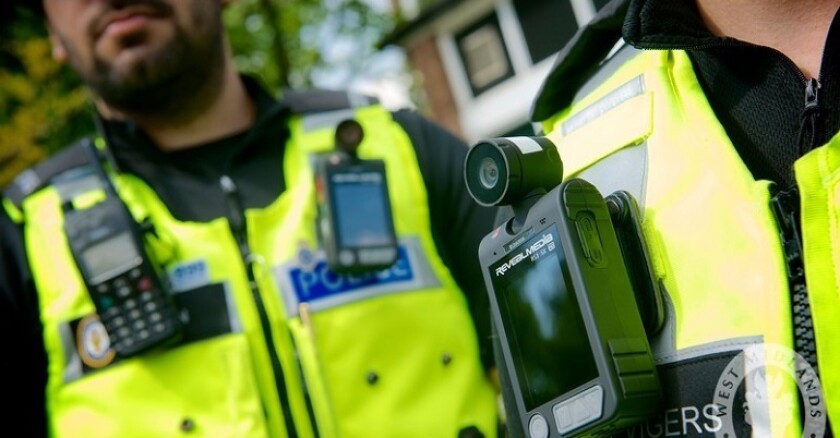Body-worn cameras and automatic facial recognition systems earned high levels of trust from the public, with 61 percent in favor of more funding for technologies like these that help police be more transparent. Nearly half (48 percent) said body-worn cameras were the technology with the most potential to make communities safer.
But little attention has been given to how law enforcement agencies (LEAs) will deliver better transparency, especially given tight budgets, staffing constraints and growing demand for information. The resources needed to maintain, redact and distribute records can create a heavy burden. For example, the average officer equipped with a body-worn camera produces 32 files, seven hours and 20 GB of video per month. It can take 5-10 hours for a human to redact personally identifiable information (PII) and other protected, sensitive data from one hour of video. In this era of 24/7 news cycles and social media, even heroic manual efforts by LEAs to respond quickly can be interpreted as foot-dragging by the public — especially in high-profile cases.
ADOPTION OF BODY-WORN CAMERAS
It is estimated that the number of LEAs to adopt body-worn camera programs more than doubled between 2013 and 2018 in the U.S. But with seven states currently mandating the use of body-worn cameras by law enforcement officers and legislation pending in several others, it’s a matter of when — not if — LEAs will be faced with the sheer volume of electronic data that will be generated.
AUTOMATING RESPONSES TO PUBLIC RECORDS REQUESTS
As more LEAs adopt body-worn camera programs, overall Freedom of Information Act (FOIA) request volumes are growing. Public records requests are up 60 percent since 2018 and 20 percent in the past year, with video records requests up 122 percent since 2018 and 55 percent in the past year. The sheer volume and complexity of information that needs to be reviewed, redacted and approved prior to release is becoming virtually impossible to complete with manual approaches in a timely fashion.
Implementing technologies that automate the public records request, review and fulfillment process can speed the release of public records while increasing transparency. In addition, most citizens report a positive outcome when their requests for public records information are received and responded to in a reasonable amount of time.
THE BENEFITS OF MODERN TECHNOLOGIES
- Reducing or eliminating the need to hire specially trained staff for records redaction, a technical skill many departments lack
- Providing residents with centralized, secure access to intake forms 24 hours a day, seven days a week through self-serve tools
- Allowing residents and agency employees to better track FOIA requests online and proactively share information
- Improving accuracy by ensuring that personally identifiable information and other sensitive data remains secure and protected
- Reducing the need for clarification and time-consuming follow-up by refining requests at the onset through smart intake forms that collect all the necessary information (or redirect requesters to information already released) paired with automated back-end workflows that efficiently route tasks
- Reducing the amount of paperwork and freeing up time to work on other important agency business
- Simplifying the secure storage, redaction, transfer and tracking of video and audio records
With better technology and objective data leading the way, LEAs have the opportunity to shine a light on their operations and answer the public’s call for increased transparency.
Cindi Mansell is a former city clerk and contributor to GovQA.








